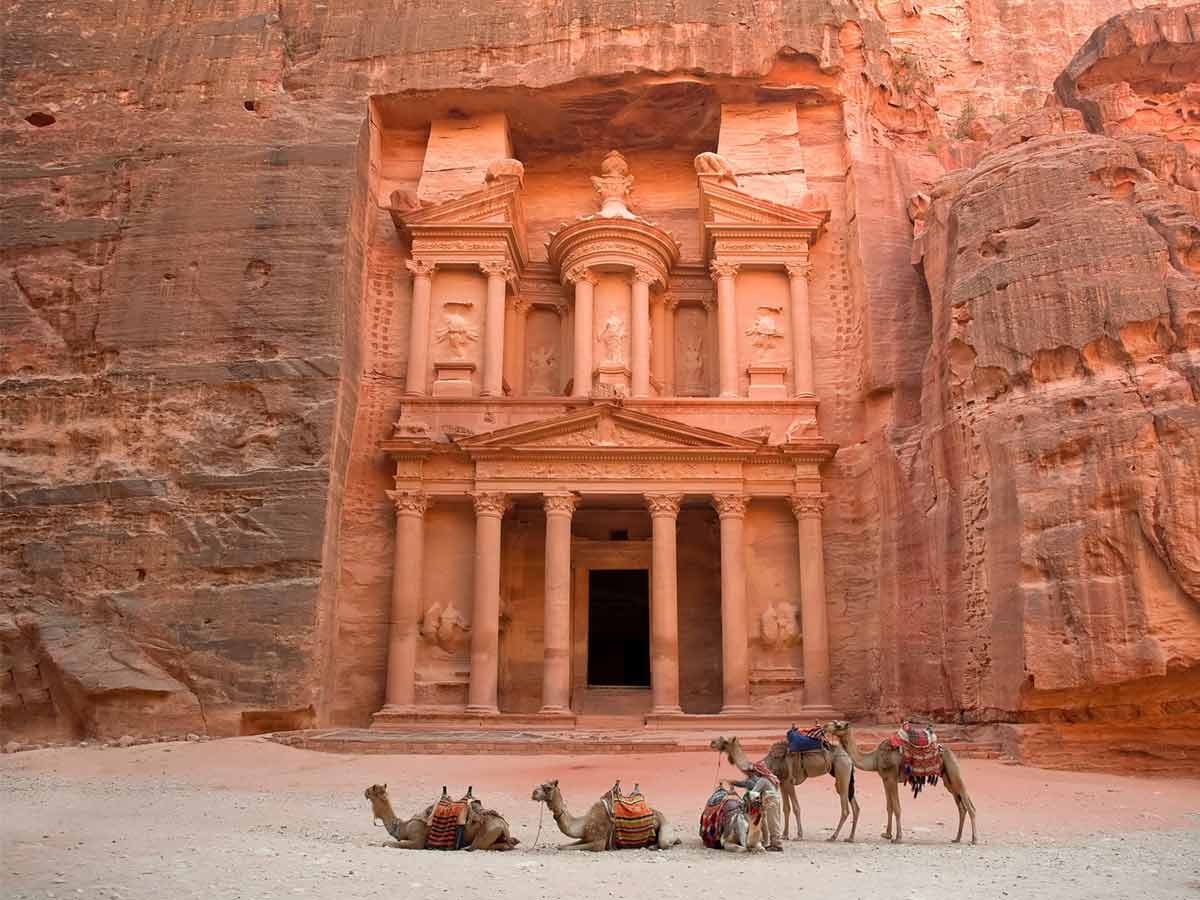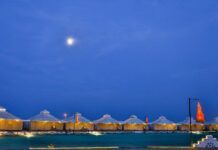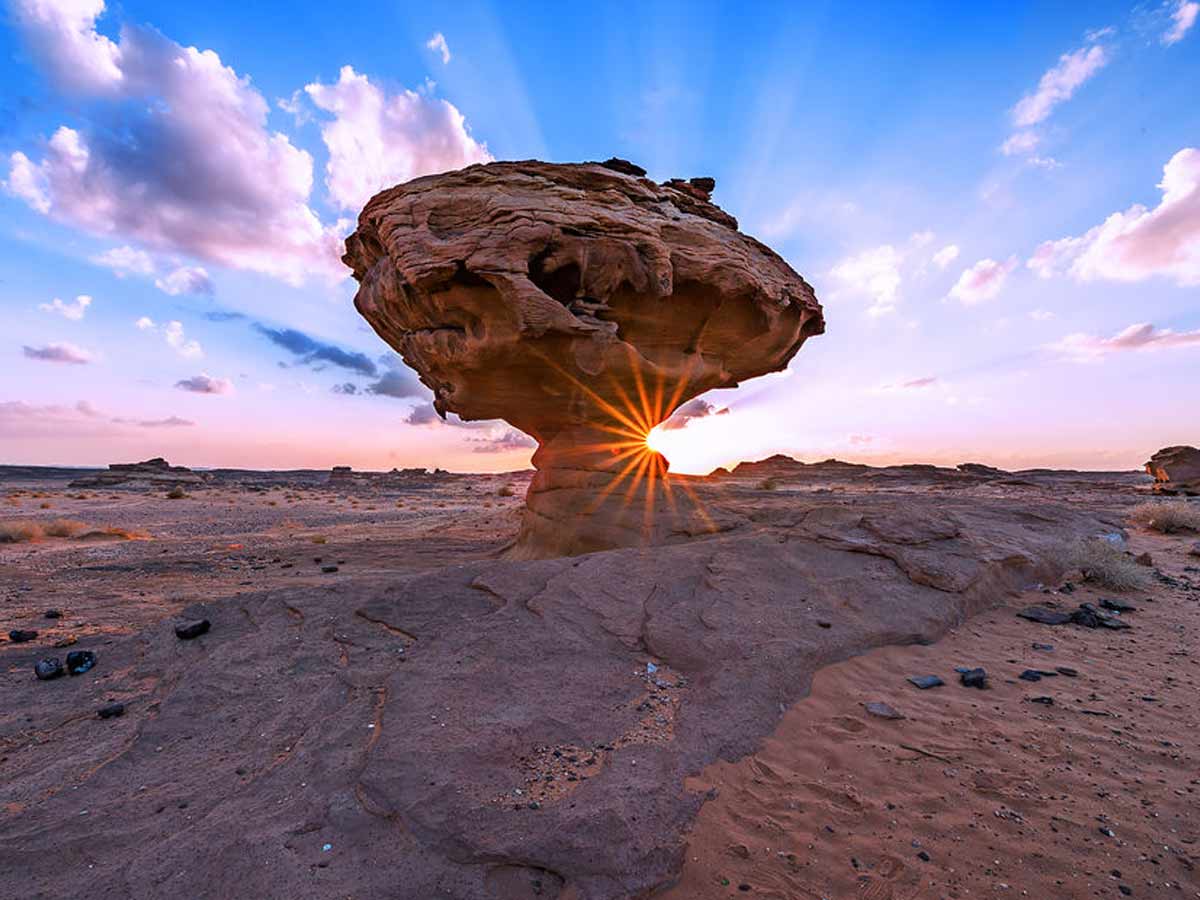This Nabataean caravan city, located between the Red Sea and the Dead Sea, has been inhabited since prehistoric times and served as a vital crossroads between Arabia, Egypt, and Syria-Phoenicia Petra of Jordan half-built, half-carved rock city encircled by hillsides and peaks crisscrossed by passages and valleys. It is one of the most well-known archaeological sites globally, where ancient Eastern traditions coexist with Hellenistic architecture.
This world wonder is Jordan’s most priceless treasure, as well as the country’s biggest tourist destination. The Arabic people formerly lived in the Jordan deserts near Petra. This location became a vital link in transporting goods between Saudi Arabia, China, Greece, Egypt, Syria, and Rome.
History
Petra, or “Raqmu,” as the Nabateans called it, is one of Jordan’s most recognized cities because of its archaeological and architectural history. Because of its pink granite formations, the city is also known as Rose City.
Petra was founded in 312 AD and became the capital of the Nabateans, who were mentioned in the Bible. They lived in the Petra region between the IV AC and the II DC. Petra was also a highly important trading center between the Arabic peninsula and Damascus in Syria; now, Petra is Jordan’s most visited tourist attraction.
In 106 A.C, the Romans conquered Petra of Jordan and made it a Roman province. Petra grew in importance throughout the second and third centuries. By the seventh century, the Romans had lost control of the city to Islam.
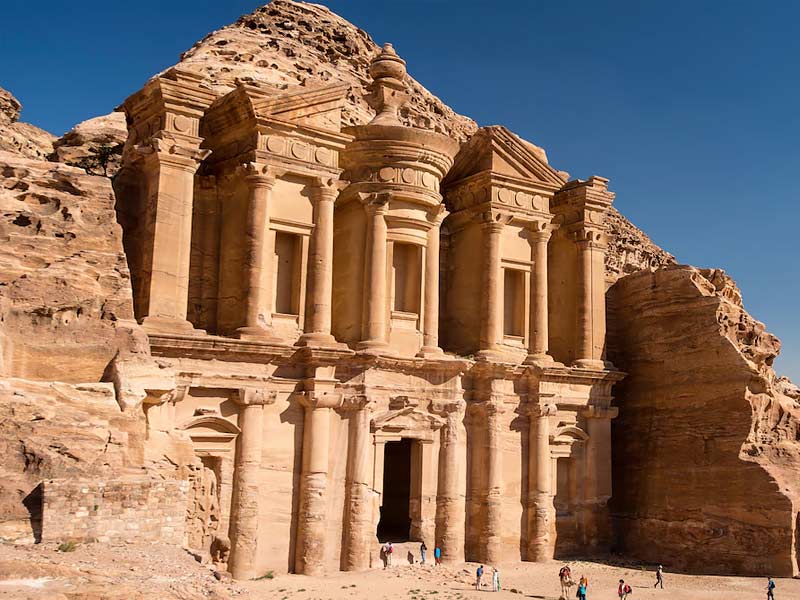
Petra was conquered by new lords again in the 12th century. For a while, it was buried until it was discovered by Swiss explorers Johann Ludwig Burckhardt, who was responsible for introducing the city to the world with his poem, a rose-red metropolis half as old as time.
Today, visitors may discover various blends of Nabataean and Greco-Roman architectural styles in the city’s tombs, many of which were robbed by criminals, and their contents were thus lost.
Today, Bedouins sell tourist goods not far from the site where Arabs say Moses smashed a rock with his staff, causing water to break forth.
Petra of Jordan was named one of the Seven Wonders of the World in 2007, and UNESCO characterized it as “one of the most treasured properties of humanity’s cultural inheritance.” Petra of Jordan has been a UNESCO World Heritage Site since 1985.
Also Read, The Sun Temple of Modhera: An Architectural Wonder…
Where exactly is Petra?
Petra of Jordan is situated in the mountains on the east side of the Wadi Araba, between the Dead Sea and the Gulf of Aqaba. Many historic sites, such as the Roman Theater and the Royal Tombs, may be found in the city of Petra.
Best time to visit Petra
Summer is not the greatest time to visit Petra of Jordan unless you want to tour some of the best spots to visit in Petra in the sweltering heat. The best time to visit Petra is during the spring season, which runs from May to September, or during the fall season, from September to November. The temperatures range from 18 to 25 degrees Celsius, and the weather is really pleasant.
6 Surprising Facts About Petra of Jordan
1. It is recognized as a UNESCO World Heritage Site.
Petra of Jordan is a protected UNESCO World Heritage site with “outstanding universal value” due to its usefulness, preservation, and architecture. Because of its position in the desert, the first residents had to invent novel methods of bringing water and other resources to the citadel.
2. The Well-Known Treasury Is Actually A Graveyard
Despite what you may have seen on film, Petra’s Treasury is not a huge maze of booby-trapped rooms designed to separate the righteous from the unworthy, but rather a relatively tiny area that is most likely a beautifully adorned graveyard. Any underground riches were most likely taken a long time ago. Still, the Treasury facade is a work of art meticulously carved by the Nabataeans millennia ago.
3. It is home to over 1,000 tombs
The Nabataeans revered their deceased and took extra care to commemorate them as they transitioned from this world to the next. They constructed almost 1,000 fortified graves on the mountains surrounding the city.
These tombs coexist with images of their gods, creating a sense of fluidity between the sacred and the mundane.
4. It Honors the Sun
Like many other peoples of the time, the Nabataeans regarded the sun as a source of light and life, and Petra’s design reflects that reverence. Many of the city’s most hallowed locations are designed to correspond to solar cycles, such as solstices.
5. A Massive Earthquake Destroyed It
In the year A.D. In 363, a massive earthquake devastated Petra of Jordan, leveling most of the city and ending its reign as a vibrant and prosperous commercial center. Many Petra residents abandoned the area following the calamity, and the city was lost to the ages.
6. It’s Close to a Well-Known Biblical Site
According to the Bible, Moses fetched water from a stone in Wadi Musa, also known as the Valley of Moses. The water supply for Petra of Jordan came from this place, which, according to Biblical legend, continued to pour water following Moses’ miraculous performance.
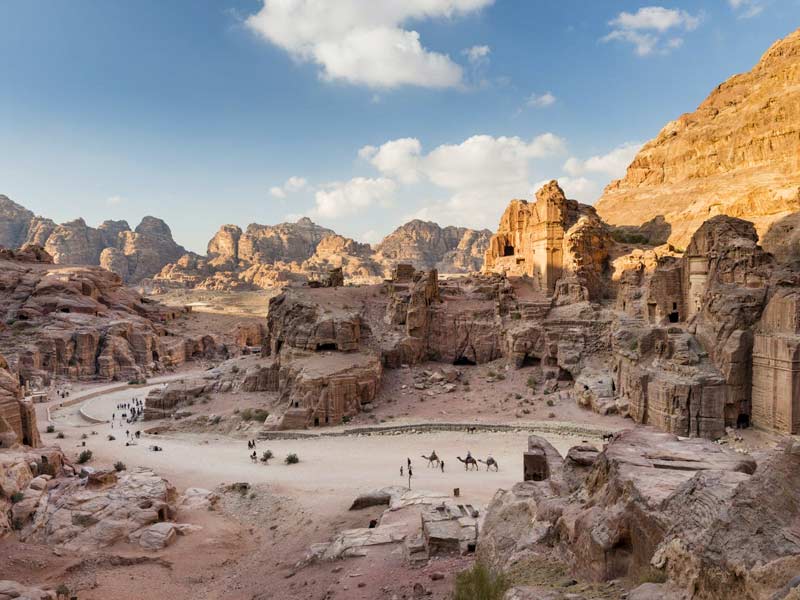
5 sight-seeing attractions in Petra of Jordan
1. Siq
As-Siq, also known as Siq, is a legendary passageway that leads to Petra. Siq, which translates to “shaft,” was formed when a mountain split in two owing to geological processes. A walk down this corridor will be nothing short of spectacular. Yet, with walls towering over your head, it will also be slightly terrifying. But it’s all worthwhile because As-Siq is one of Petra’s most essential and best spots to see.
- Time: NA
- Location: Al-Siq, Jordan
2. AD-Deir
If you believe that a journey is not complete without an adventure, then hike to Al-Deir Monastery in Petra of Jordan, which is one of the most incredible spots to see in Petra, Jordan, and you will be shocked at how beautifully preserved the place is. Not only can you enjoy some wonderful cuisine with a view here. If you prefer to eat healthily, try a cup of freshly squeezed pomegranate juice, and you will be ecstatic.
- Location: Ad-Deir, Jordan
- Hours of Operation: 24 Hours
3. Colonnaded Street
It’s something you have to see to believe. If that’s your style, Colonnaded Street is one of the best spots to visit in Petra. The roadway, which was built in 106 AD, displays the Roman impact on the city. The Colonnaded Street follows the traditional design of the typical east-west oriented decamanus, with stores on both sides, and you can’t miss it.
- Location: Colonnaded St, Jordan
- Hours of Operation: 24 Hours
4. Al Khazneh
The Al Khazneh, one of Petra’s most famous sights, is thought to be the city’s most intricate and costly treasury. Exploring the location will feel like going from light to dark, but we bet you’ll feel enlightened when you’re done. Al Khazneh, which translates to “The Treasury,” is one of the most beautiful and serene spots to visit in Petra of Jordan.
- Location: Al-Khazneh, Petra,
- Jordan Hours: 9 a.m. to 5 p.m. (Monday through Thursday and Sunday); closed Friday and Saturday
5. High Place of Sacrifice
If you want to see the greatest views of Jordan, the High Place of Sacrifice is a must-see in Petra. The High Place of Sacrifice is one of the most approachable and accessible high locations to visit in Petra, Jordan, and may be reached by hiking. If you don’t feel like walking, you can take a donkey ride for JD 10 instead (INR 1015). The structure was built atop Jebel Madbah when animal sacrifices were common, and there was a need to channel the blood.
- Time: NA
- Location: Jebel Madbah, Petra, Jordan





















